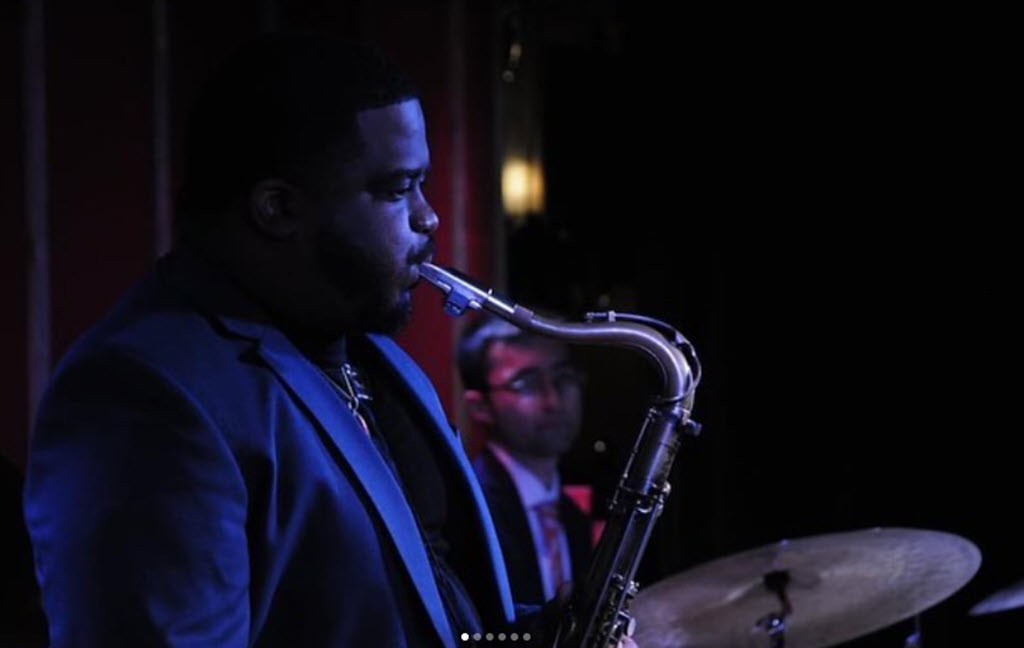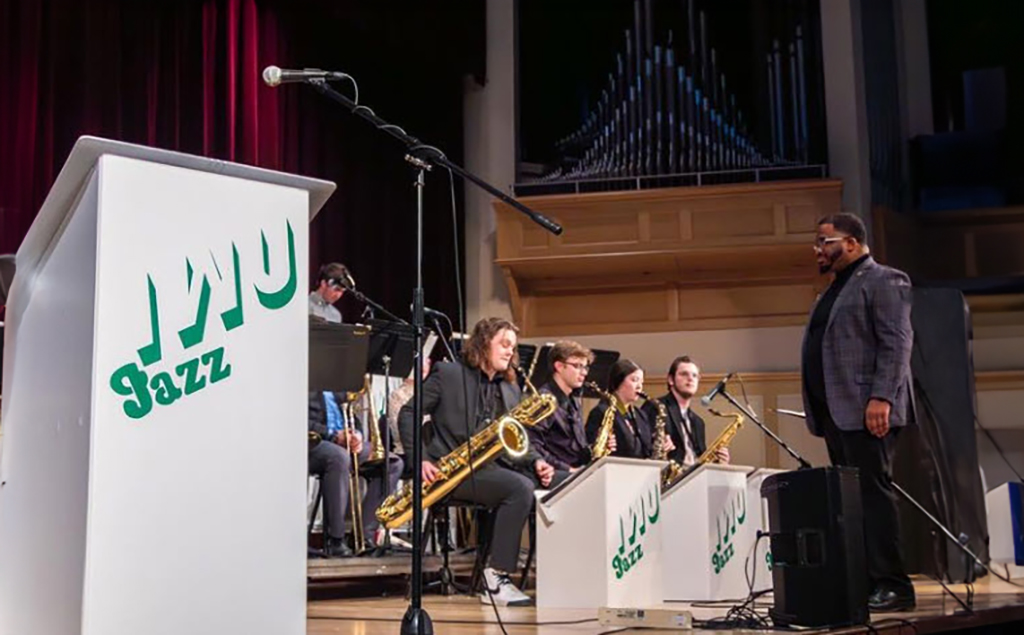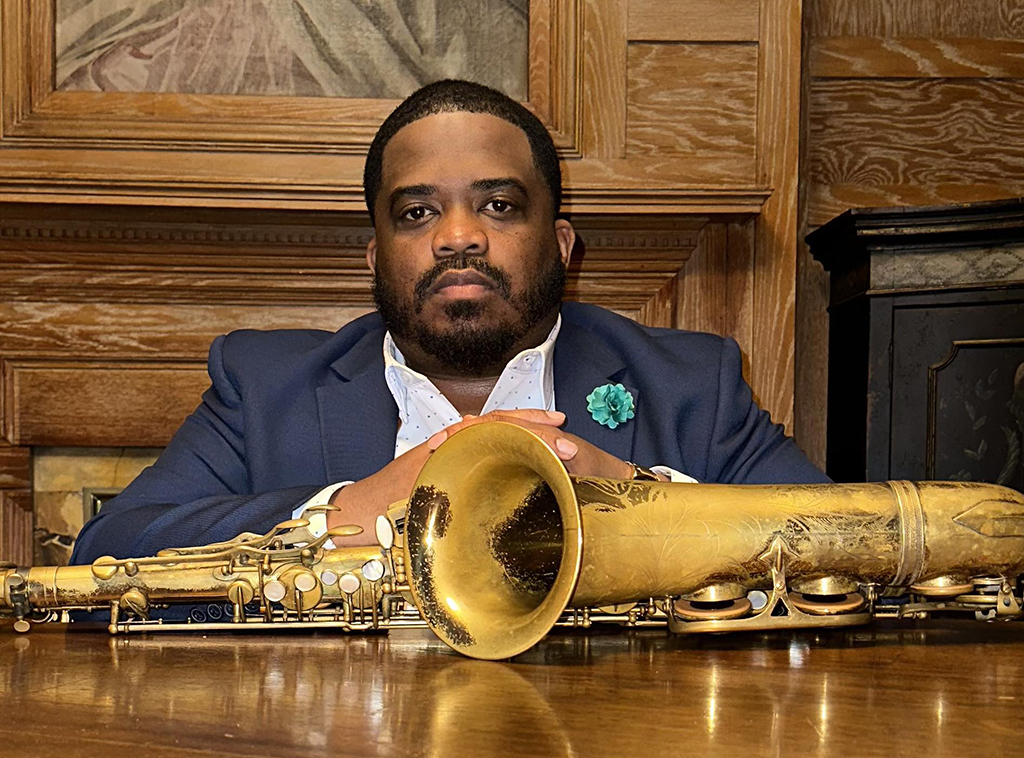The current jazz director at Illinois Wesleyan University, Dr. Reginald Lewis is an established jazz performer and beloved teacher. With an impressive discography, Dr. Lewis was featured in the James Brown biopic Get on Up as the saxophonist in Little Richard’s band, and can be heard on Jon Gordon’s album Stranger Than Fiction as well as Nasir Dickerson’s Let It Shine and Mir Fontane’s debut album Camden. Dr. Lewis is a member of “Simply This” and released an album Stepping Up in 2021. Not only are these just a few of his great accomplishments as a jazz performer, Dr. Lewis goes above and beyond to teach the next generation of jazz performers making him an integral part of the jazz community.
Starting his music journey at 16, Dr. Lewis acknowledges that while he did start a bit late in pursuing music, he felt inspired under the mentorship of his grandfather, legendary jazz Robert “Bootsie” Barnes. Having gone to a performing art school and pursued an art major, Dr. Lewis’ only teacher was his grandfather in high school. He acknowledges that while he was behind his peers in terms of experience, it seemed to push him harder and gave him the desire to “catch up to everybody else.” Being a beginner is always rough, but Dr. Lewis didn’t let it get him down as he “knew what was attainable” because “it was right next to me. I was surrounded by it every day.”

When approaching his music, Dr. Lewis’ creative process is to listen. The technical side of music is important but to him, it is about “how it makes you feel.” If you feel it, and you hear it — all you need to do is write it out. Generally, when writing a song he notes he’s usually thinking about or listening to something, but there is always a spark of creativity in him. He likes to “come up with the melody first” and then find “complimentary chord changes” to write his songs.
However, it wasn’t until 2015 that Dr. Lewis felt a turning point in his career as a jazz performer. It was the TD Bank Winnipeg Jazz Festival with Q5, led by Quincy Davis. Dr. Lewis was called on by his old professor to perform at this festival. Performing with Q5 had “that that put a fire up underneath of me.” He had acknowledged that the music was difficult, but he isn’t someone to back down from such a challenge. While this performance was a turning point for him, his favorite performance was the last one he did with his grandfather.
The performances done with his grandfather were a bit more spontaneous. At Chris’s Jazz Cafe where his grandfather would perform, Dr. Lewis would show up to watch. At some point, his grandfather had turned to him and said, “Let’s play the blues.” Afterward, his grandfather would give him songs to learn so they could play together. In the last performance, the two of them had played together once before his grandfather gave the stage to Dr. Lewis and let him perform three songs. He now remembers that performance by saying, “I got to play for him for the last time.”

Dr. Lewis continues to hold the legacy of his grandfather, imparting the lessons he learned to his students. The lessons vary from “always listen,” to “learn your scales, learn your standards, learn standard jazz tunes,” and “always be kind.” The most important one is acknowledging “everybody plays differently,” meaning as a performer and artist, you shouldn’t compare yourself to others and “do the best that you can do because everybody plays a different way.” Dr. Lewis cares deeply for his students, making the lessons interesting and keeping them relevant for them.
Acknowledging that some teachers try to keep their students in boxes by constantly having them do scales and techniques and generally stay in one genre. Dr. Lewis does his best to bring more contemporary music into the conversation and to perform. When speaking up about upcoming events, he mentioned doing a recording booth session with his students, but also about doing the first Honor Jazz Clinic on March 8th and 9th. He also frequently appears at Rose Bowl Tavern playing as Reginald Lewis and Friends, as well as playing in the Reginald Lewis Quintet. He also recently played at the Urbana Free Library, performing an array of jazz and soul that celebrated the rich musical heritage of Champaign-Urbana.
Learn more about Dr. Lewis on his website, Facebook, or Instagram.








